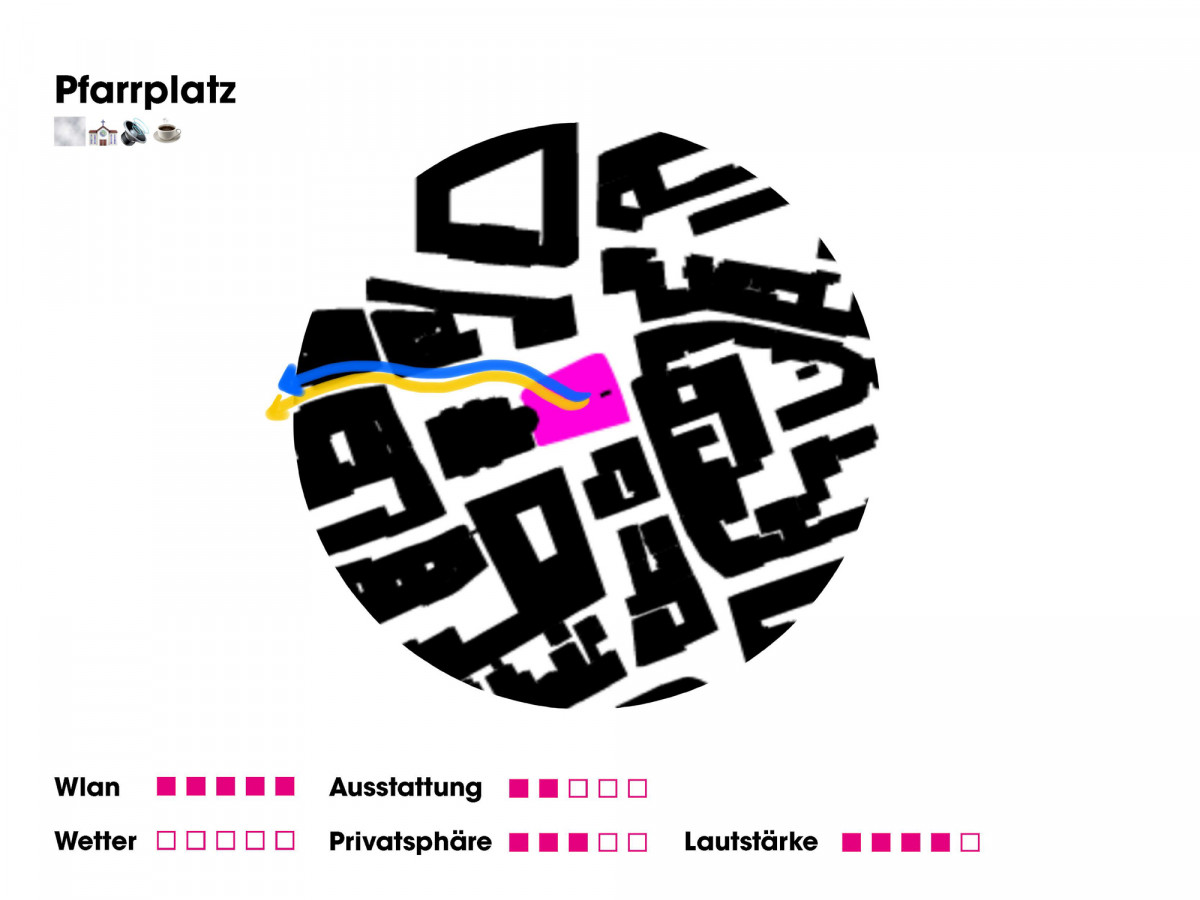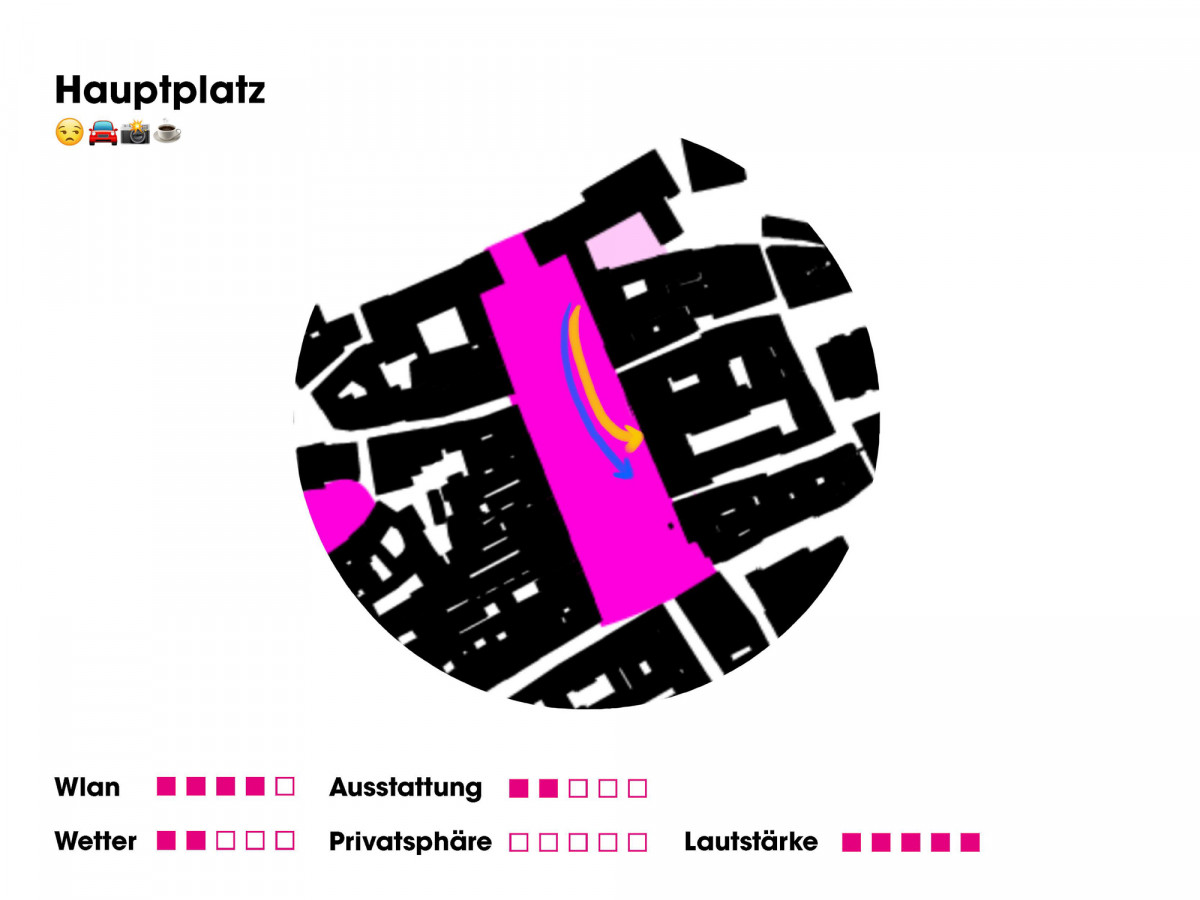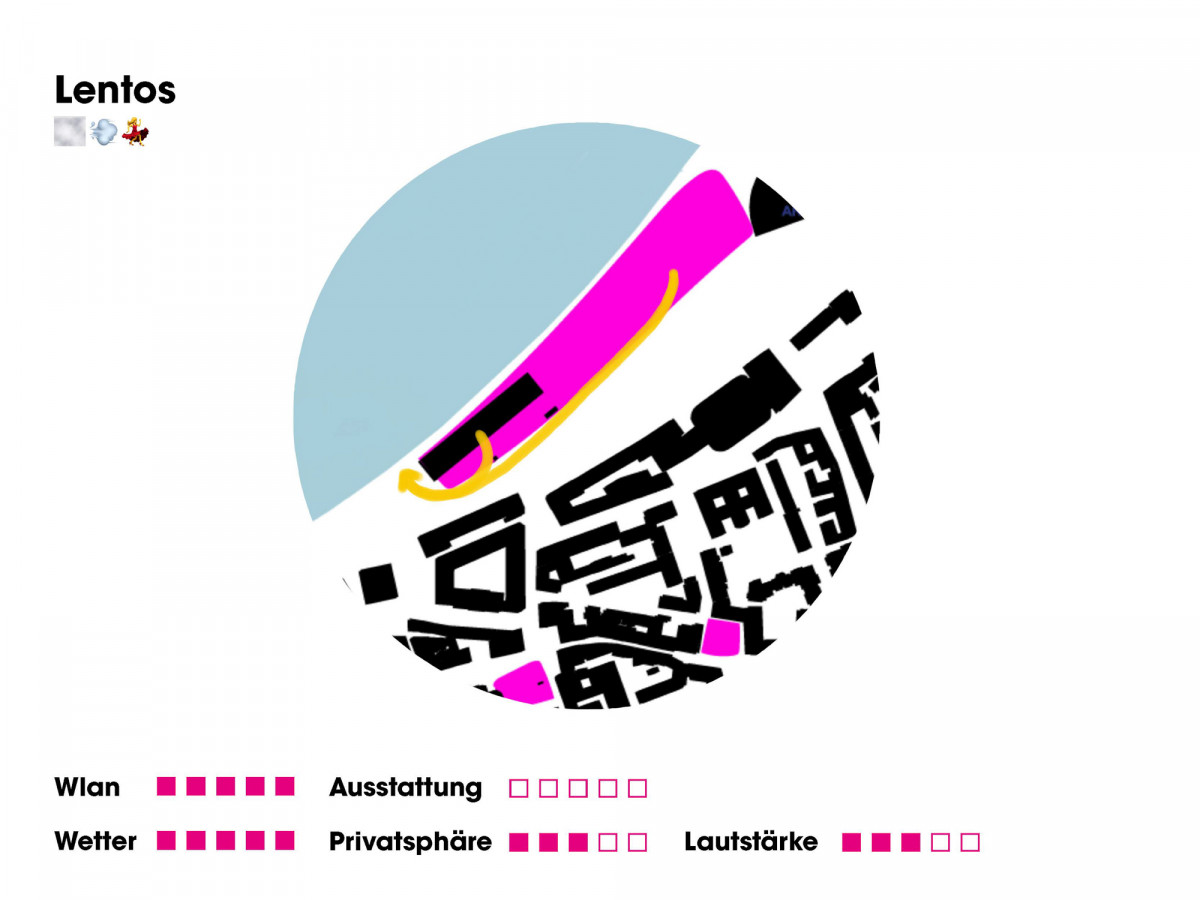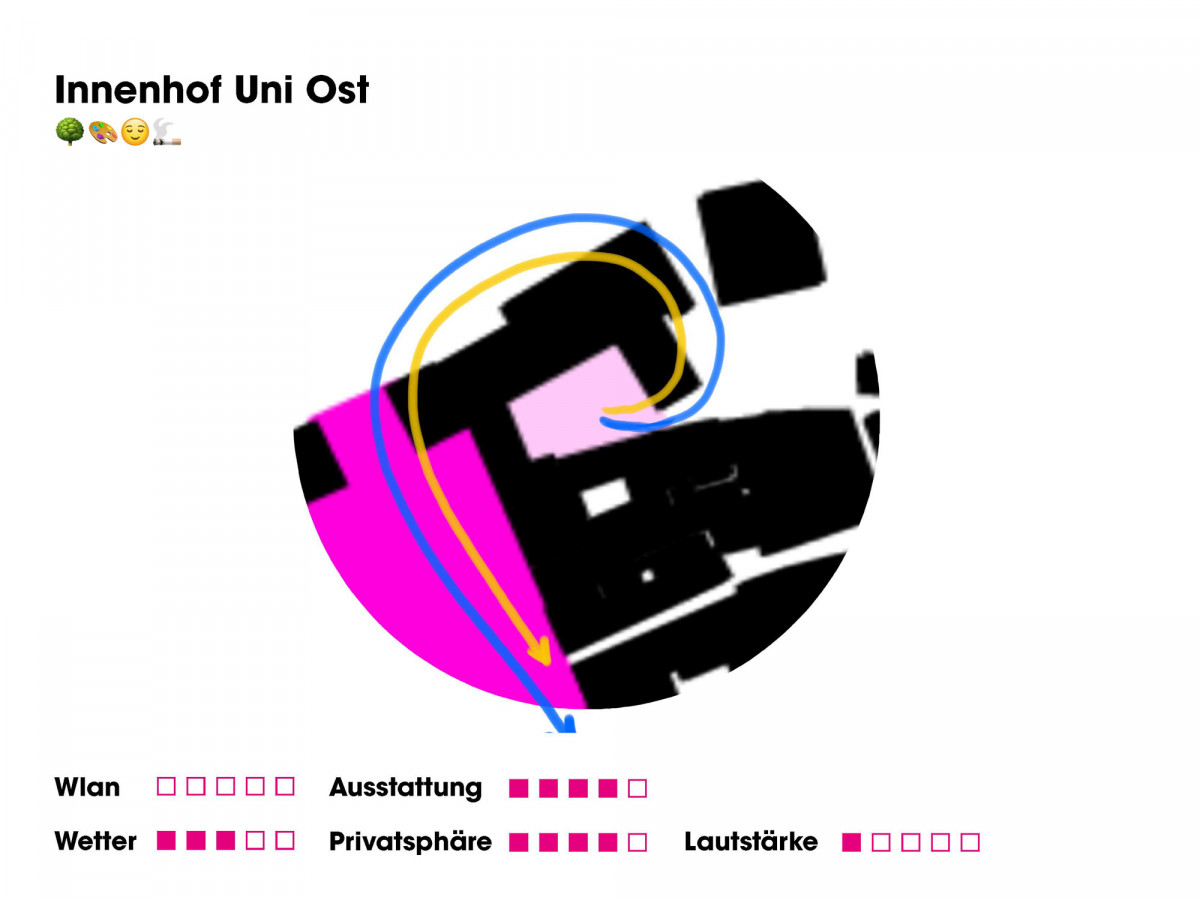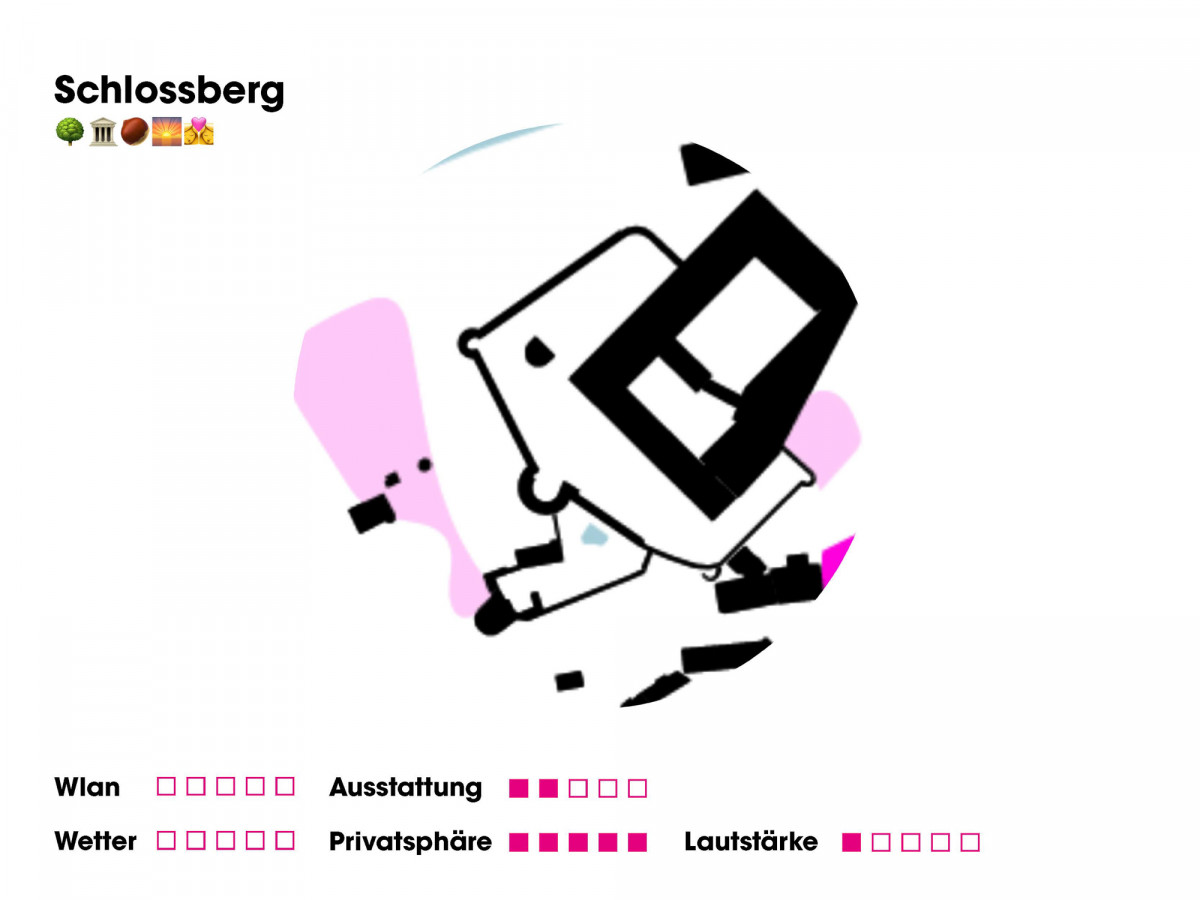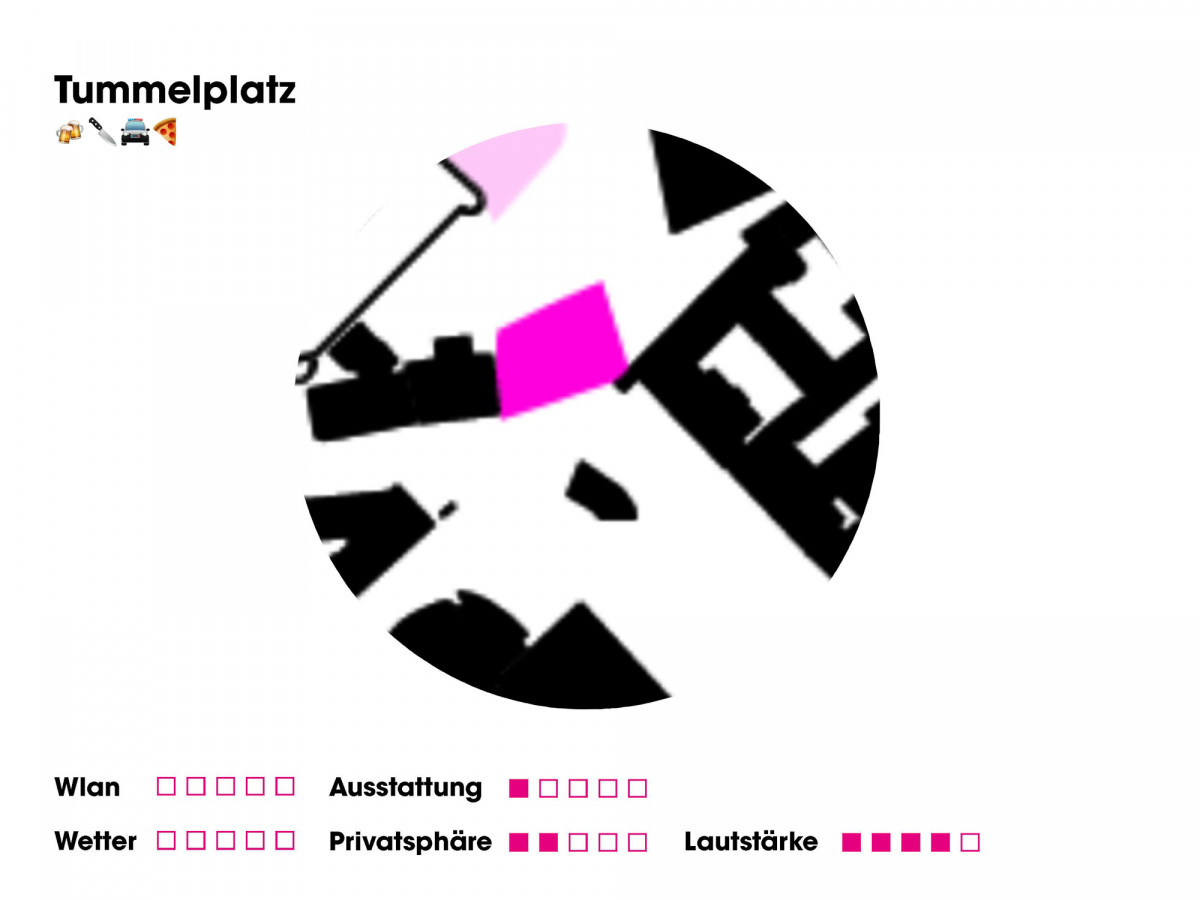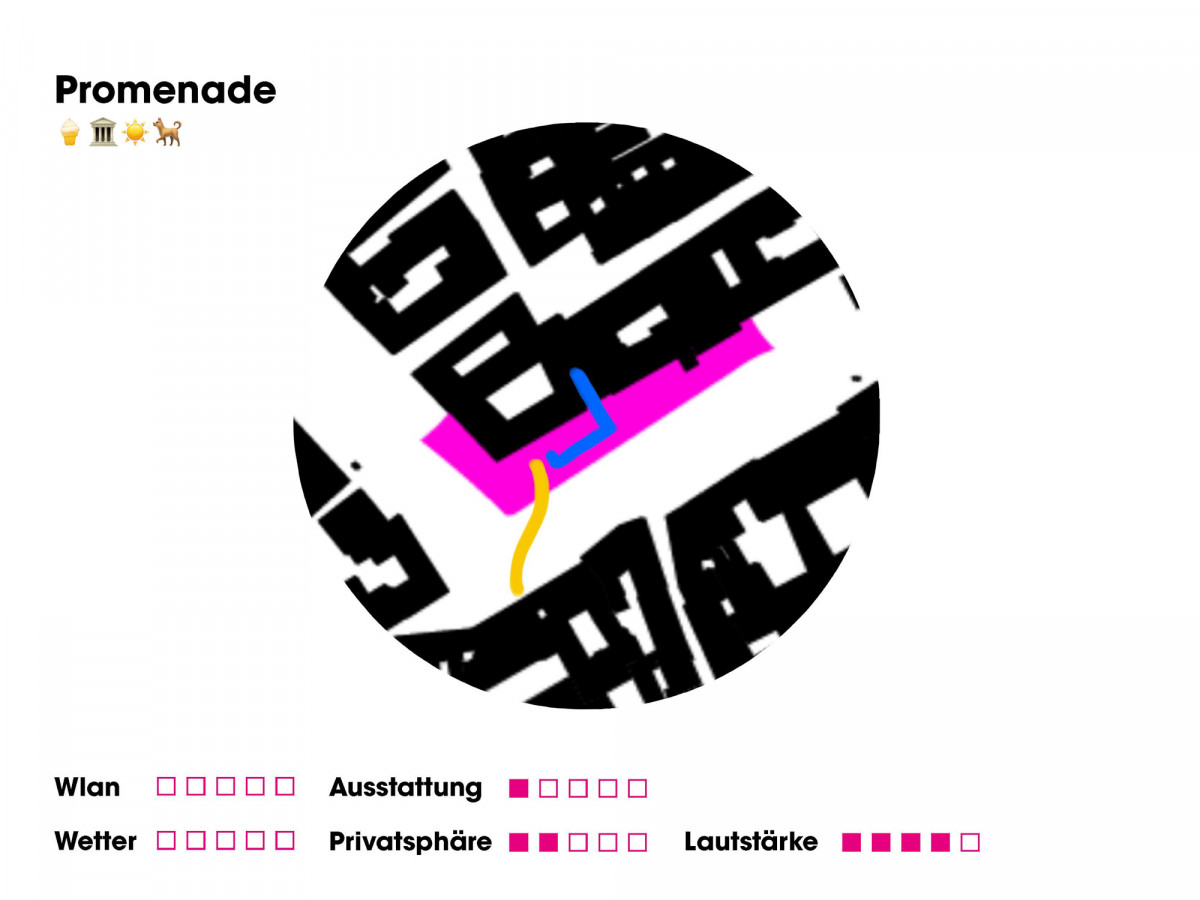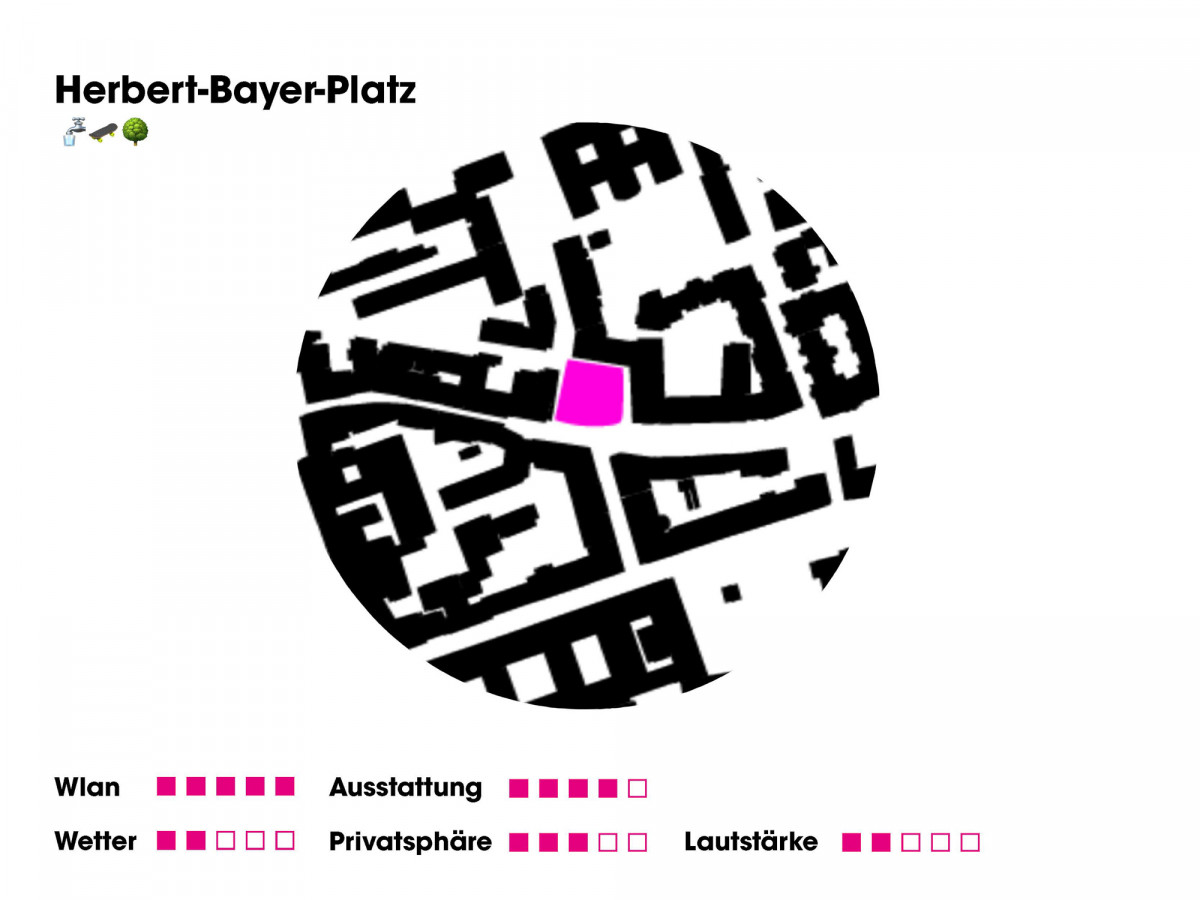Into the City with the Notebook
Into the City with the Notebook
PROJECT BY Stefanie Hoffmann, Sarah Dorfer,
Anne Rotter, Valentina Hölzl, Carina Lindmeier
What do you do during a global pandemic if you cannot afford an internet connection at home? If, maybe, you used to have daily access to the Internet at university or at work and now suddenly find yourself in a home office situation? Is there adequate room in urban space for work, communication and meetings?
During the strict social distancing measures in spring of 2020, a fellow student found himself in a situation where he had no access to the Internet in his own apartment and therefore had to look for it in public space. He joined his online meetings from the public wifi hotspot at the Linz main station.
Access to free wifi in public areas, without the pressure of consumption that exists in places like cafés, is not a matter of course. To be able to connect to the Internet in one’s own four walls is still a privilege. And right now, while we live with Covid-19, our communication space is shifting from the physical to the virtual. We have to hold meetings, seminars, lectures, and more, on digital platforms. But where in Linz are public, consumption-free spaces that can be found for just these situations?
In the urban space of Linz, we looked for public spaces that provide free access to the Internet and examined the built infrastructure offered at these locations. In the inner city area from Schlossberg to Donaulände, we analyzed several places, taking into account several key aspects: Wifi, equipment, privacy, weather protection, volume, power supply, proximity to public hygiene facilities, and drinking water. Places of analysis were the Hautplatz, Taubenmarkt, Promenade, Alter Markt, Tummelplatz, Schlossberg, the inner courtyard of the Art University, Pfarrplatz, Herbert-Bayer-Platz, Lentos and the Donaulände. Surprisingly, many of these places offer stable Internet access, but the surroundings of the places are different.
There is a strong desire for innovation in public space to allow for work and communication under the changed circumstances. We now need places that provide infrastructure for the use of digital devices and enable meetings with colleagues in the open air, all the while maintaining sufficient distance from each other.


